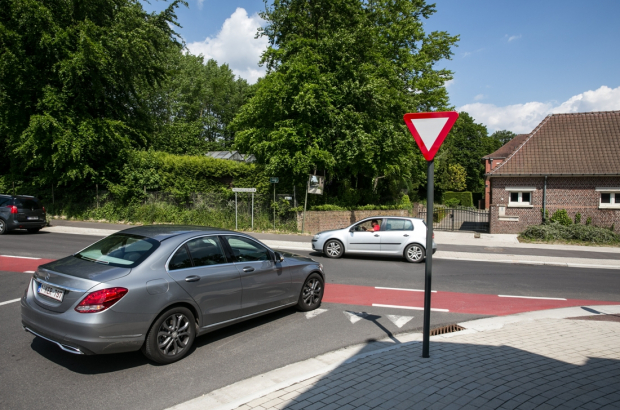- Daily & Weekly newsletters
- Buy & download The Bulletin
- Comment on our articles
More support for abolishing priority to the right traffic rule
Flemish motoring organisation VAB would like to see the priority to the right traffic rule scrapped completely. The organisation, which provides roadside assistance, driving school and advice to authorities on mobility issues, are inspired by one town’s experience of abolishing the regulation.
The priority to the right rule requires drivers to give priority to approaching traffic on their right, unless otherwise indicated. This applies regardless of the size of the roads, the speed limits or if a car is turning onto another road. This means that cars going different directions on the same road have different priorities, depending on if a car is entering on the driver’s right or left.
The regulation has long flummoxed expats, but it can also prove confusing to Belgians at some intersections. “The right-of-way regulation leads to confusion, to incorrect reactions and, therefore, to accidents,” Maarten Matienko of VAB told VRT.
At the end of 2017, Glabbeek, about 20 kilometres east of Leuven in Flemish Brabant, abolished the right-of-way rule. “In one year, the number of traffic accidents that could be attributed to this regulation fell from 18 to three,” said the mayor, Peter Reekmans (LDD). “This would suggest that our decision has improved traffic safety in our town.”
Small town, small roads
With just over 5,000 residents, Glabbeek saw more harm than good come from priority to the right. “A large majority of the streets in Glabbeek are small streets that feed into the main road,” said Reekmans. “Outside of three intersections, priority must now be given to traffic on the main road.”
The town identified three intersections that could be confusing and marked them clearly as to who has the right-of-way. This did not go unnoticed by VAB. “Every year, some 15,000 accidents are attributed to priority to the right,” said Matienko. “And often it’s because the drivers didn’t realise they didn’t have the right-of-way.”
While priority to the right would remain at intersections where priority is unclear, like in other countries, VAB would like to see Glabbeek’s method become the norm. So would federal mobility minister Francois Bellot (MR).
A new version of the Traffic Code is currently before the Council of State for advice, and it does include the regulation, “but regional and local authorities can make decisions about traffic signals and signs where they see an opportunity,” said a Bellot spokesperson.
Naturally, there are detractors: Federal road safety agency Vias does not want to see a change in the regulation. “You’d have to look at every single intersection to see how it should be marked,” said a spokesperson. “Not every town has just one major road.”
Photo: Shark’s teeth make the right-of-way at this intersection clear. In the absence of shark’s teeth, the darker car would have the right-of-way ahead of one lane of traffic - but not the other



















Comments
it is the most insane, useless, crazy, silly, dangerous, pointless rule I have ever encountered in my life....it makes NO SENSE
Am I crazy or is the end of the article wrong about who would have right-of-way without shark's teeth?
Stevus....not sure, but there is also a yield sign
Great idea and long overdue. You should be able to keep driving unless there is a red-light, stop sign or yield sign. Period. Priority to the right is for farms and corn fields. This will make Belgium safer and more hospitable to international visitors. Plus, those "teeth" are not really visible in the snow or if coverered with dirt. Belgium. welcome to the 21st century, hopefully.
Too much talk for nothing. The "priority to the right" law will never change in any right-side-of-the-street driving country for tons of driving safety reasons. The "experiment" in Glabbeek was nothing of an experiment, it was simple logic which dictated that you can't merge from a small 30km/h street onto a hi-traffic 50km/h main street without taking into consideration the oncoming flow and its speed, especially in an area where half of the (12) intersections have very bad visibility for the merging driver. The whole discussion is just to persuade us into accepting the tens (or hundreds) of millions which will be spent on stop signs, traffic lights etc. and their maintenance.
Stevus ... I wrote the photo caption, and yes, it was unclear. I tweaked it to make it more clear. Thanks for pointing that out.